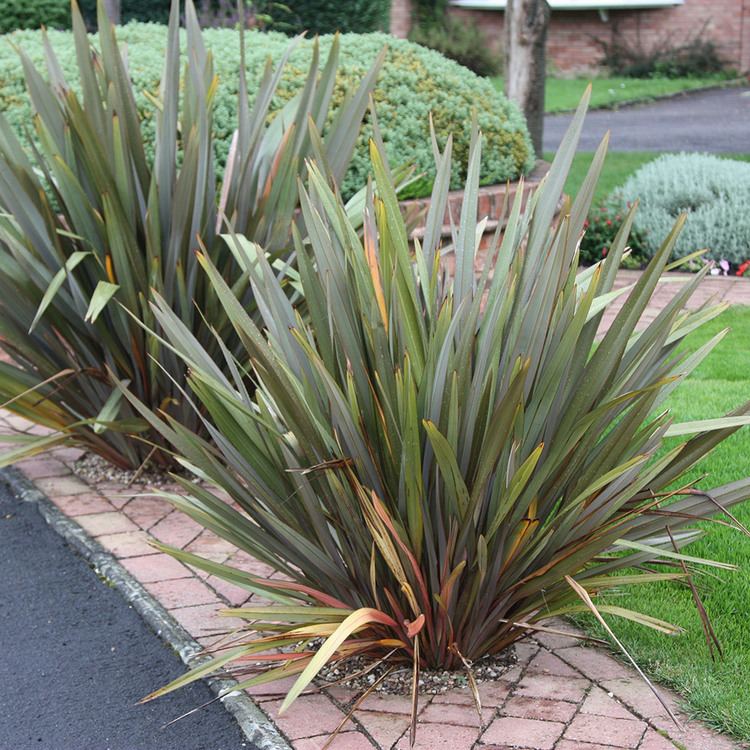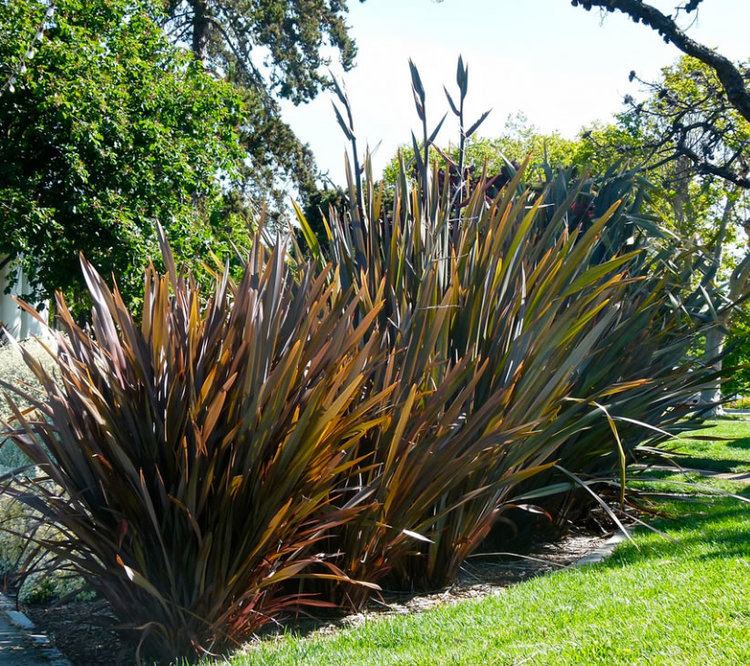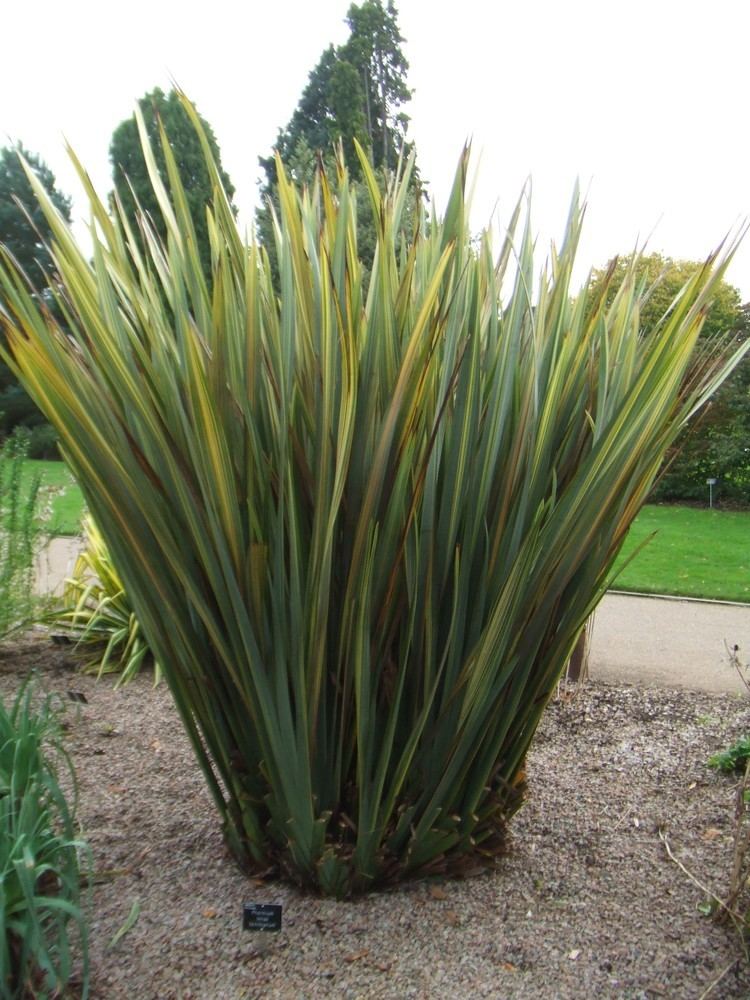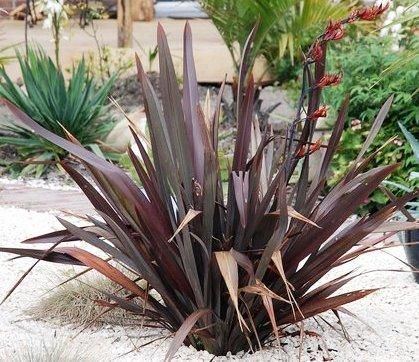Clade Monocots Rank Species | Clade Angiosperms | |
 | ||
Similar Phormium colensoi, Cordyline australis, Cordyline, Tui, Cheesewood | ||
Plant id guide phormium tenax
Phormium tenax (called flax in New Zealand English; harakeke in Māori; New Zealand flax outside New Zealand; and New Zealand hemp in historical nautical contexts) is an evergreen perennial plant native to New Zealand and Norfolk Island that is an important fibre plant and a popular ornamental plant. The plant grows as a clump of long, straplike leaves, up to two metres long, from which arises a much taller flowering shoot, with dramatic yellow or red flowers.
Contents
- Plant id guide phormium tenax
- Phormium tenax variegata 7 5l pot at big plant nursery in west sussex uk
- Ecology
- Cultivation
- Cultivars
- References

The fibre has been widely used since the arrival of Māori to New Zealand, originally in Māori traditional textiles and also in rope and sail making after the arrival of Europeans until at least WWII. It is an invasive species in some of the Pacific islands and in Australia.

The blades of the plant contain cucurbitacins, which are poisonous to some animals, and some of them are among the bitterest tastes to humans.

Phormium tenax variegata 7 5l pot at big plant nursery in west sussex uk
Ecology

The jumping spider Trite planiceps lives predominantly in the rolled-up leaves of this species. Phormium tenax is a coastal cover plant associated with significant habitat such as the breeding habitat for the endangered yellow-eyed penguin.
Cultivation

Phormium tenax had many uses in traditional Māori society. Many of these uses have largely fallen into disuse, though there is an upswing in the use of traditional materials in modern Māori art and craft. The two most common forms for flax in traditional craft are the use of stripped, dried leaves as broad bands, such as in the weaving of kete (flax baskets), and the scraping, pounding, and washing of the leaves to create a fibre — muka — which is used in tāniko (weaving) of soft, durable fabric for clothing. Flax is also used as a decorative and structural element in tukutuku, panelling found within Mãori wharenui (meeting houses).

Prior to the Great Depression of the 1930s, which decimated flax as an industry, there were two serious attempts by Europeans to breed for fibre. The first was by Wellington-based Leonard Cockayne about 1908. The second by Massey-based John Stuart Yeates in the late 1920s.
In recent times, P. tenax and its cousin P. cookianum have been widely cultivated as ornamental garden plants, their striking fans of pointed leaves providing a focal point in mixed plantings or at the edge of a lawn. They are easy to grow in a sunny spot, especially in coastal areas with some protection in winter, but require reliably moist soil. They are frequently found in garden centres amongst plants with a similar appearance, notably Yucca and Cordyline. However, these are very different plants with different requirements. P. tenax and some cultivars can grow to a substantial size - 4 m (13 ft) tall by 2 m (7 ft) broad.
New Zealand Flax was cultivated on Saint Helena from the late 1800s to around 1966 for the production of string and rope and for export. Today the plants remain but the industry has stopped; they are considered an ecological problem.
Cultivars
More recently several cultivars have been selected as decorative garden plants, including:
Those marked agm have gained the Royal Horticultural Society's Award of Garden Merit.
